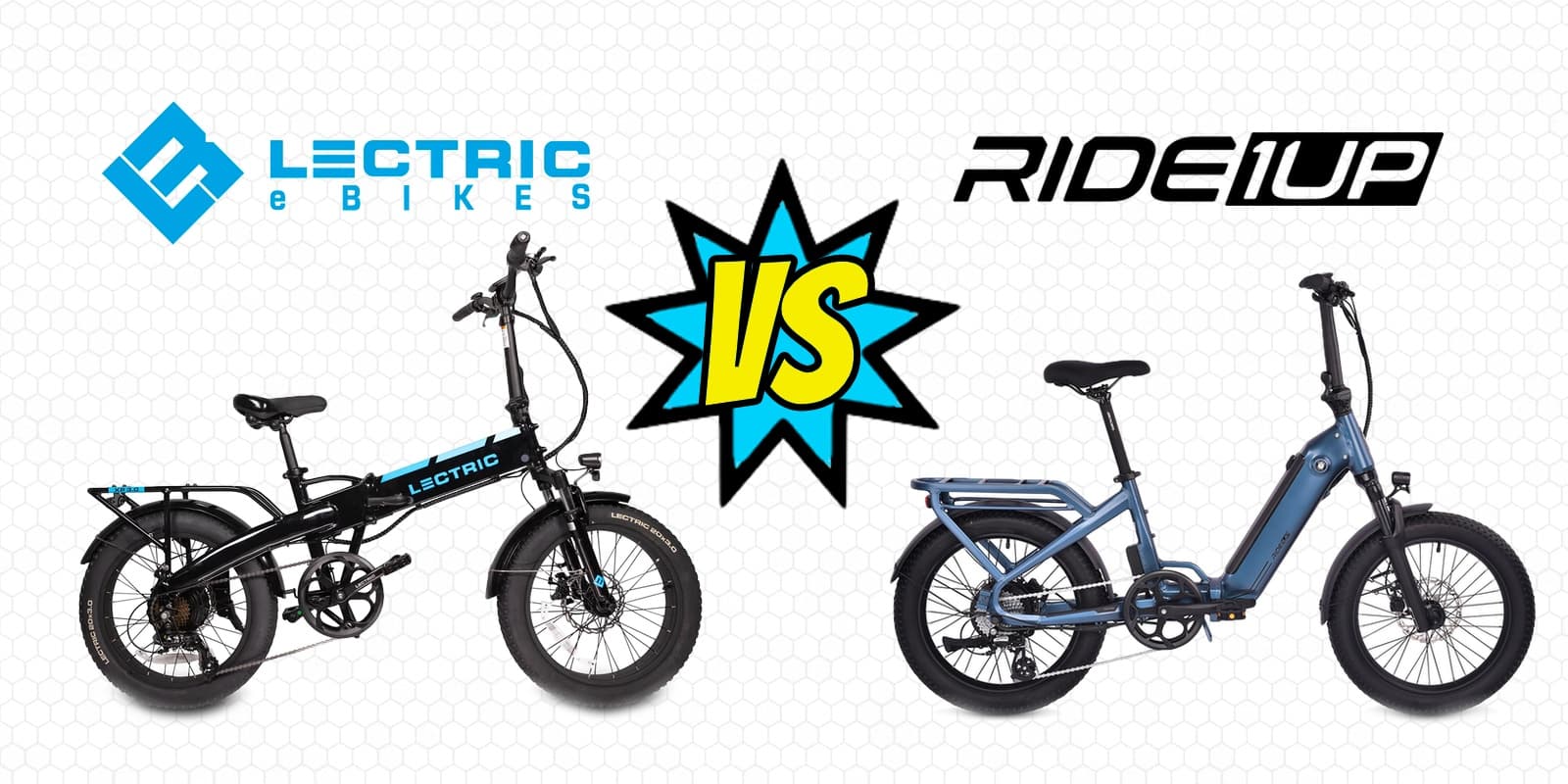
There are plenty of low-cost electric bikes out there, but the lowest-priced options can sometimes be more trouble than they’re worth. Two main sub-$1,000 folding electric bikes have risen to the top of the bang-for-your-buck list, the Lectric XP 3.0 and the Ride1Up Portola.
So which one is right for you?
Lectric XP 3.0 Vs Ride1Up Portola – How did we get here?
The Lectric XP 3.0, as the name suggests, is the third iteration of what has become the best-selling electric bike in North America. The $999 e-bike may not be a masterclass in sexy design, but it sure does manage to jam-pack performance into a low-cost ride. And with a large headquarters in Phoenix, AZ, Lectric Ebikes has proven that a strong support team is just as important as a low price tag.
Ride1Up, another leader in value-oriented electric bikes, got its start shortly before Lectric Ebikes with a wide range of commuter-focused models. The company has recently expanded into new bike styles but is a relative newcomer to the folding e-bike space after launching the Ride1Up Portola earlier this week. The Portola is widely seen as an attempt by Ride1Up to target that lucrative folding fat-tire e-bike slice of of the mobility pie that Lectric has dominating for years.
The two bikes are actually quite similar, so let’s dive in and see how we can differentiate them.
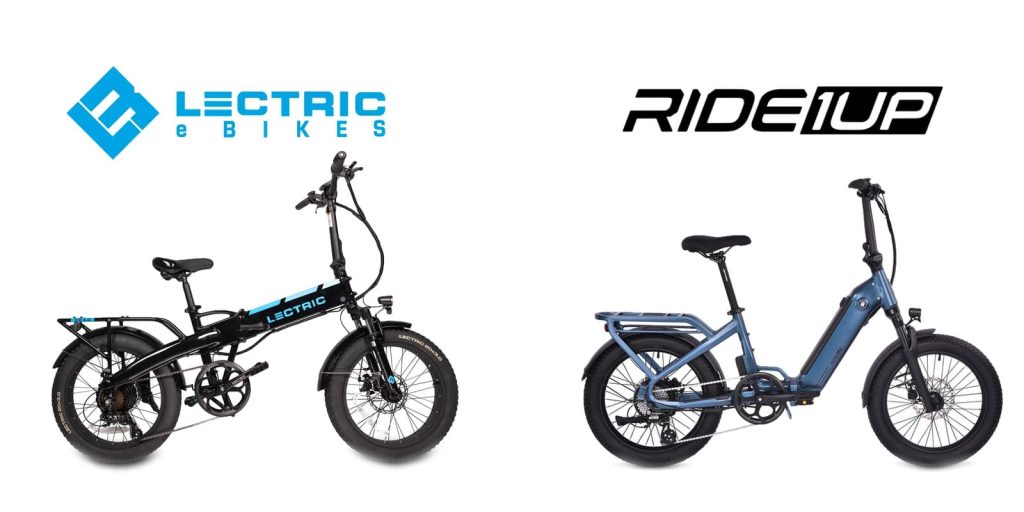
Lectric Ebikes vs. Ride1Up: Price
The Lectric XP 3.0 has long been priced at $999, helping keep it on just about every “best e-bike under $1,000” list out there.
The Ride1Up Portola recently debuted with an MSRP of $995, which makes the difference in price largely meaningless unless you were really hoping to spend your last four dollars on some cool beads for your bicycles spokes.
As part of this week’s launch though, the Ride1Up Portola is actually on sale for $895 though, meaning you’ll save an extra $100 if you decide to buy one by… today. For anyone reading this in the future, we’re probably back to that four-dollar price difference.
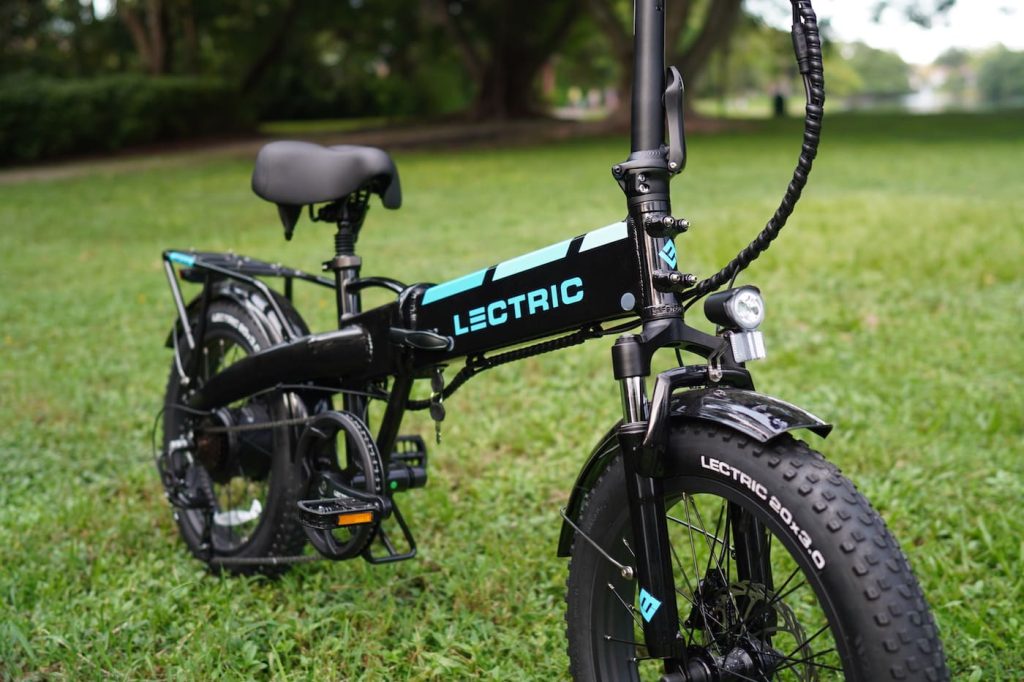
Speed and power
Both the Lectric XP 3.0 and the Ride1Up Portola ship as Class 2 electric bikes, meaning they’ll hit 20 mph (32 km/h) out of the box on throttle-only acceleration. They can also both be unlocked via the bike’s display to Class 3 speed, meaning you can use pedal assist to reach a maximum of 28 mph (45 km/h).
The power levels are slightly different though. Lectric claims a 500W continuous power motor with 1,000W of peak power and 55 Nm of torque. The Portola gets a more powerful 750W continuous power motor and 65 Nm of torque (the peak power spec isn’t published).
That means that all else being equal, the Portola is likely to accelerate a bit more quickly and climb hills faster, even if the flat ground top speeds of the two bikes are largely similar. Those that live in hillier areas are more likely to feel that difference, while those that live in flatter areas won’t feel the contrast as significantly.

Battery capacity and range
Advertised range is a highly suspect figure in the e-bike world because it can be affected by everything from tire to pressure to terrain to how much you ate for lunch. The exact same e-bike can get 20 miles or 50 miles of range when switching from power-sipping pedal assist to feet-dragging throttle. That means the best way to compare two similarly sized and relatively similarly powerful bikes is by the battery capacity.
The base battery on the Lectric XP 3.0 and Ride1Up Portola are actually the same capacity. Both are rated at 48V 10.4Ah for 500 Wh of capacity.
Both bikes also come with a larger battery option though, with the Lectric’s measuring in at 48V 14Ah for 672 Wh of capacity and the Ride1Up Portola’s packing slightly less at 48V 13.4Ah for 643 Wh of capacity. Those are quite close, but Lectric takes the cake there.
Consider though that the long-range battery option is only a $100 upgrade from Ride1Up but costs an extra $200 at Lectric, so the slightly smaller battery is technically also slightly more cost effective.
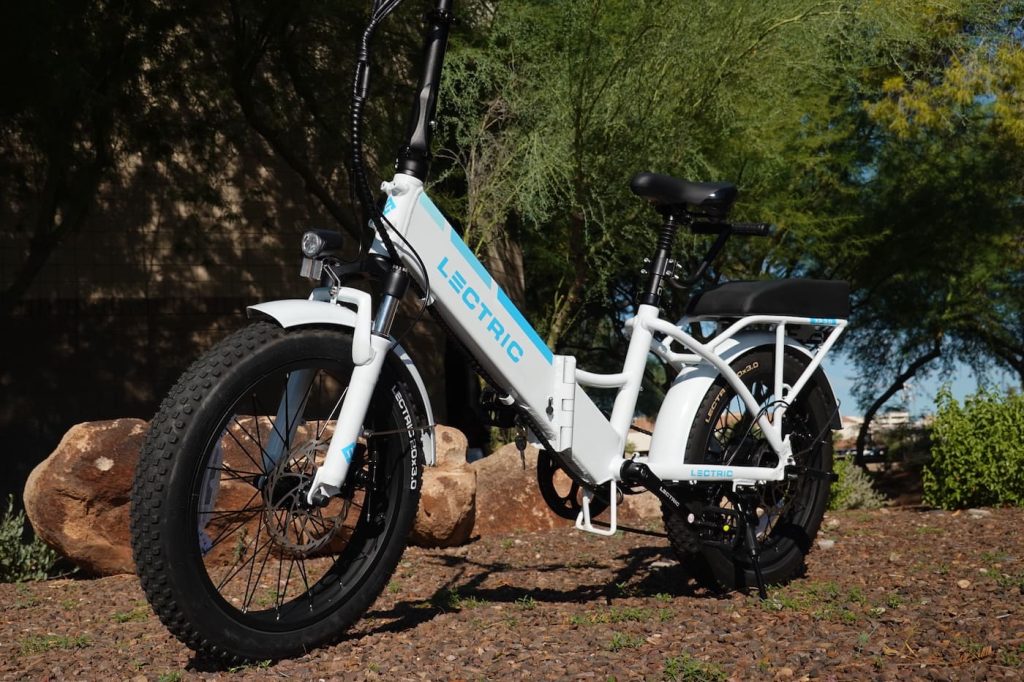
Bike components
When it comes to the drivetrain and other bike components, there are several similarities but also a number of key differences.
Both bikes feature hydraulic disc brakes on 180 mm disc rotors. They both feature 20″ x 3″ tires as a nice compromise between comfort and agility. They both feature front and rear LED lights. They both feature simplistic black-and-white LCD displays.
From here, thing start to differ. While both bikes have frame-integrated rear racks, Lectric’s comes with a higher weight rating of 150 pounds vs. the lower weight rating of 130 pounds for the Portola. On the other hand, both bikes have front suspension, but the Portola has 80 mm of travel while the Lectric XP 3.0 has just 50 mm of travel.
The Portola has slightly nicer fenders with adjustable arms for getting the perfect tire spacing (though I tend to just grab the Lectric’s arms and pull on them to bend them and adjust my spacing that way). The Portola also has an 8-speed drivetrain compared to Lectric’s 7-speed, and it powers a slightly higher-quality Shimano Altus derailleur compared to Lectric’s cheaper Tourney derailleur.
Speaking of component quality, this is probably a good time to point out that Ride1Up’s Reention FR-5 battery is also considered to be higher quality than Lectric’s more affordable DCH-006 battery. Neither come with UL-certification at the moment, but both companies are expected to such certification at some point in the future.
Both bikes appear to use current-controlled pedal assist systems (PAS), which is a more refined way to implement a cadence sensor and get faux-torque sensor performance. However, the Ride1Up Portola seems to have a finer degree of adjustability built into the PAS sensor to achieve more precise starts with less lag, down to as little as 10% of a pedal turn. There are also individually programmable PAS levels so riders can fine-tune their PAS to their liking.

Ride1Up Portola vs. Lectric XP 3.0: Convenience
Convenience is very much subjective, but there are a few important differences between these two bikes that play a big role in convenience.
For starters, the Ride1Up Portola has a battery that is removable without folding the bike, while the XP 3.0 requires the bike to be folded while the battery is removed. When it comes time for folding and lifting, the 59 lb. Portola is slightly lighter than the 64 lb. XP 3.0.
For everyday use, the Portola thus is likely slightly more convenient, though the XP 3.0 wins on the first day due to its easier assembly right out of the box. In fact, there’s no assembly required since the Lectric XP 3.0 only needs to be taken out of the box and unfolded to be ready to ride. The Portola arrives “95% assembled,” which basically means just bolting on the handlebars. That’s relatively easy (and there’s an instructional video), but it might still be intimidating to someone who has never worked on a bike before, and it is important that it is done correctly so the bike is safe to steer and ride.
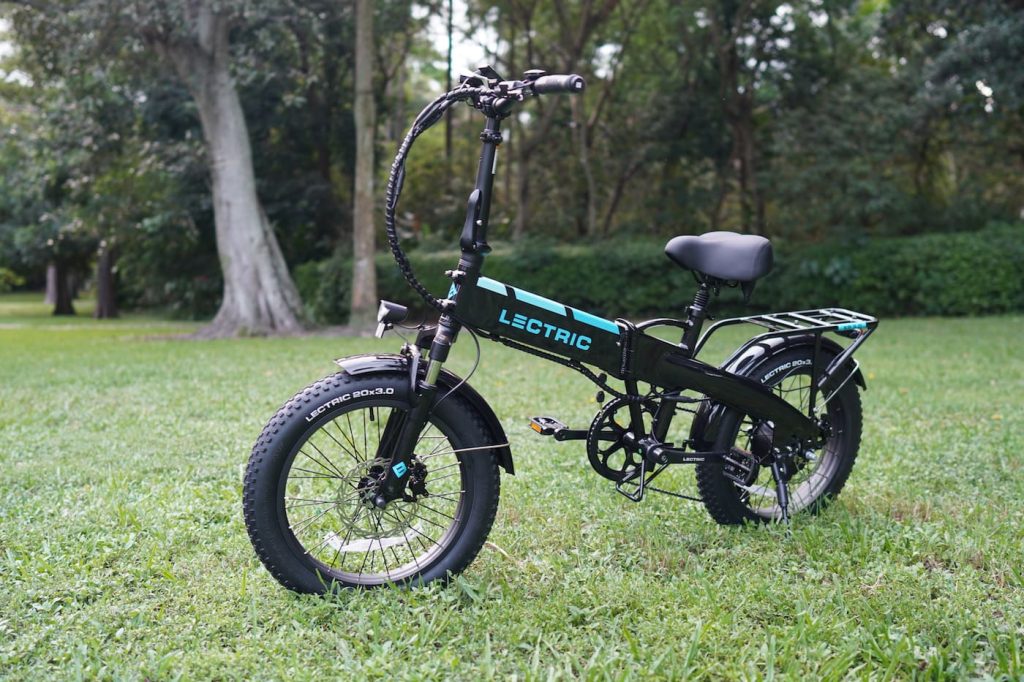
Design
Design and aesthetics can be subjective, so this section will be partly based on opinion.
Personally, I find the Ride1Up’s frame design to be sleeker and more attractive than the XP 3.0’s boxier-style frame. I also like the wider range of color choices from Ride1Up.
Lectric gives riders the choice of either a step-over or step-thru frame, while the Portola is available in only a step-thru frame. They both have a nice grab handle in the middle of the frame for lifting, so they both get points there.
The wires are run externally on the XP 3.0, which can be a positive for accessibility in the event of repairs or upgrade work, but also doesn’t look as nice as the internally routed hidden wires on the Portola.
The chrome suspension stanchions and silver fender arms on the XP 3.0 will appeal to anyone who prefers a flashier look, while the Portola’s blacked-out stanchions and fender arms offer a more muted look that blends into the bike.
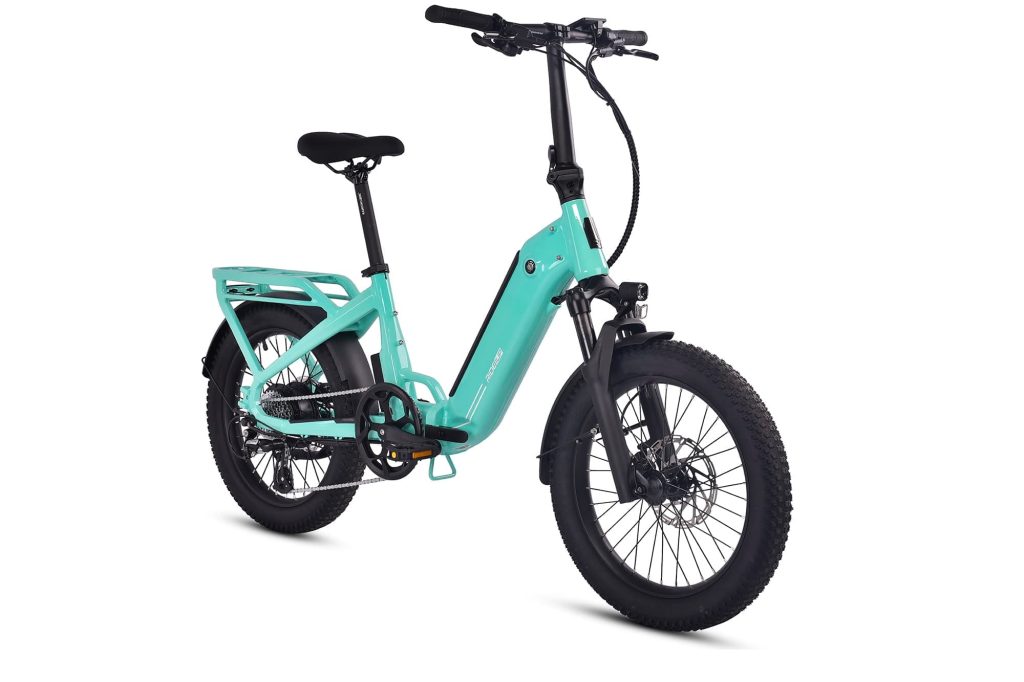
Accessory lineup
The Lectric XP 3.0 is the clear winner when it comes to the breadth of the accessories offered.
Both bikes come with similar main accessories, such as passenger packages that add a rear bench seat with foot pegs, comfort packages with nicer saddles, cargo rack and basket options, phone mounts, and panniers for carrying groceries. But Lectric has many more additional options available, likely due to holding a several-year head start in the folding fat-tire e-bike space.
Lectric also has more niche offerings such as utility trailers, pet carriers, food delivery bags, and more.
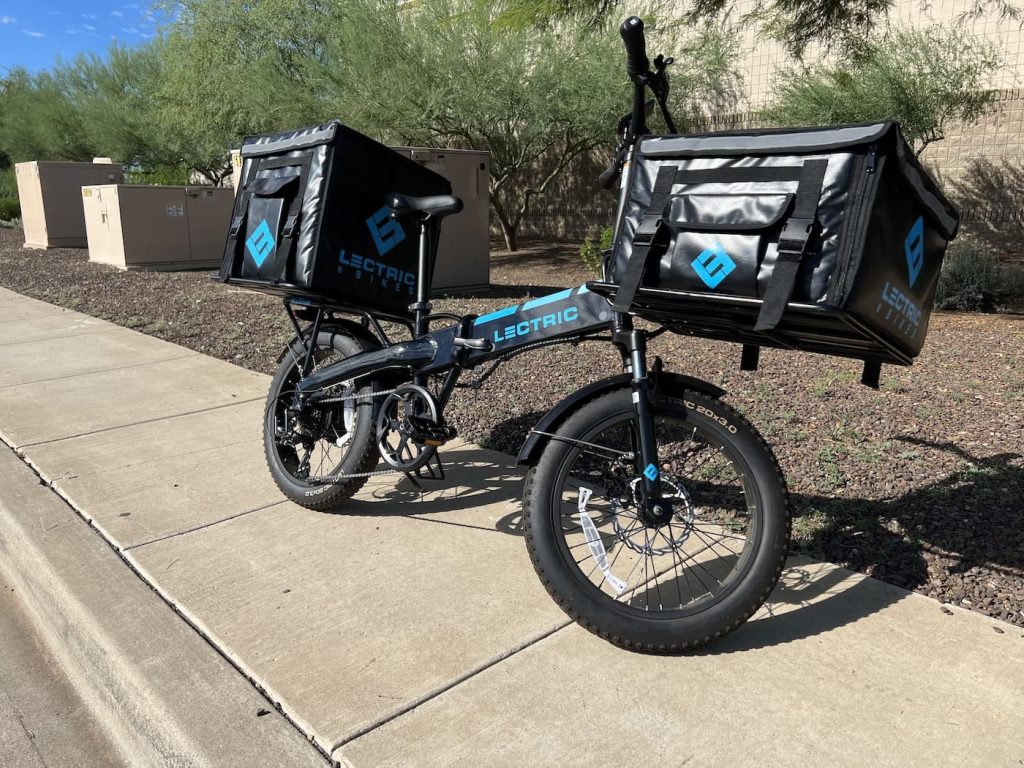
What’s the verdict?
Ultimately, both of these are very nice options with incredible bang-for-your-buck value in the sub-$1,000 space.
I’d consider the Ride1Up Portola to be slightly more refined and with slightly better components, but I can’t count out the Lectric XP 3.0’s larger battery option and fully-assembled shipping, not to mention years’ worth of customer documentation for mods, upgrades, and other content already available in online communities. As a new model, it will take the Portola time to rack up that level of online documentation from a broad rider base.
Ultimately though, both models are strikingly similar in terms of actual specs and real-world performance. So the best decision is likely to go with the one that simply tickles your fancy more.
